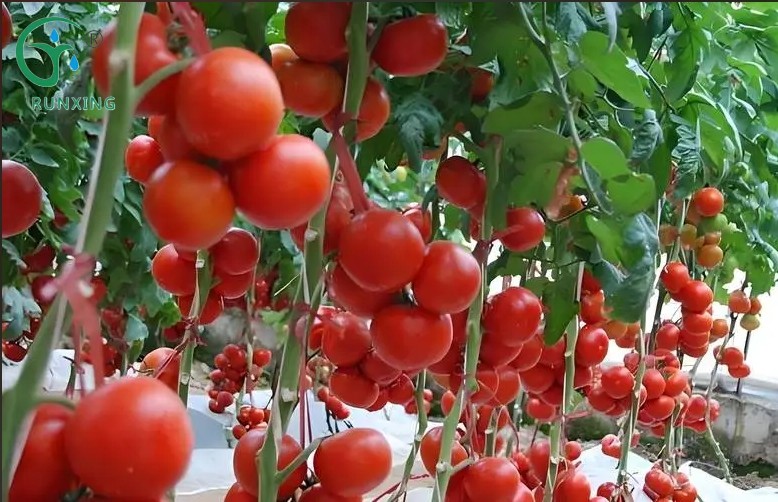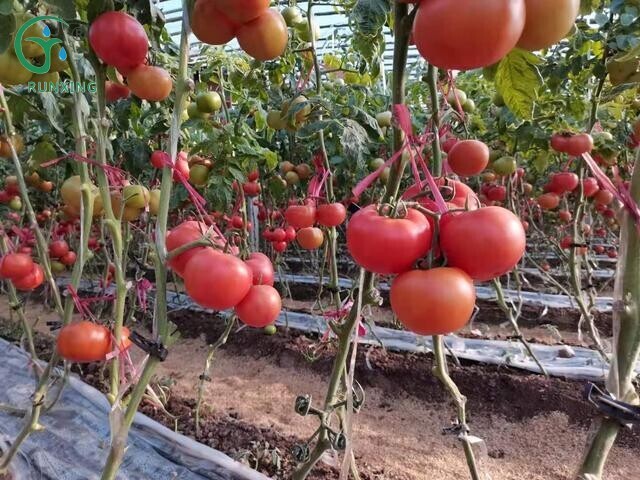The Perfect Combination of Tomato Cultivation and Drip Irrigation Technology in South America
South America, this vibrant and lively land, is not only the natural home of many plants and animals but also the origin of the nutritious fruit, the tomato. With the continuous development of modern agricultural technology, tomato cultivation techniques in South America are also constantly innovating and improving. Among them, the application of drip irrigation facilities in tomato cultivation is particularly crucial. It not only conserves water resources but also provides precise water and nutrient supply for tomato growth.

The Importance of Drip Irrigation in Tomato Cultivation
In the arid and semi-arid regions of South America, water resources are particularly precious. Traditional irrigation methods not only waste water but may also lead to issues such as soil salinization. Drip irrigation technology, however, can precisely deliver water and nutrients to the roots of tomatoes, avoiding water wastage and soil salinization. At the same time, drip irrigation technology maintains stable soil moisture, conducive to the growth and development of tomatoes.
Required Drip Irrigation Equipment and Laying Methods
The drip irrigation equipment required for tomato cultivation mainly includes a water source, water pump, fertilizer injector, filter, main pipeline, branch pipelines, and drip irrigation tapes. When selecting equipment, factors such as water quality, terrain, cultivation area, and crop type need to be considered. For tomato cultivation in South America, it is recommended to use drip irrigation tapes that are corrosion-resistant and anti-clogging to ensure long-term stable operation.
When laying drip irrigation equipment, the main and branch pipelines need to be laid first according to the terrain and water source conditions. The main pipeline is usually laid at a certain depth underground to prevent trampling and facilitate production operations. The branch pipelines connect the main pipeline and drip irrigation tapes, delivering water and nutrients to the roots of the tomatoes. The drip irrigation tapes should be laid between the rows or plants of the tomato plants to ensure that each tomato plant receives sufficient water and nutrients.
Tomato Cultivation Techniques
Variety Selection: Choosing tomato varieties suitable for the climate and soil conditions in South America is the key to improving yield and quality.
Reasonable Planting Density: The planting density of tomatoes should not be too high or too low. It should be planted at a reasonable density according to the characteristics of the variety and production needs. Generally, the row spacing is controlled at about 55 centimeters, and the plant spacing is preferably 30~40 centimeters.
Temperature Management: The optimal growth temperature for tomatoes is 20~25°C. During cultivation, ventilation and cooling should be done in a timely manner to prevent high temperature damage. At the same time, methods such as covering with shade nets can also be used to regulate temperature.
Fertilizer and Water Management: After planting tomatoes, timely fertilizer application and watering are required to promote plant growth and fruiting. Nitrogen-based fertilizers are mainly used in the early stage, while phosphorus and potassium fertilizers should be applied more in the middle and late stages. Adding an appropriate amount of nutrient solution to the drip irrigation system can provide comprehensive nutritional support for tomatoes. At the same time, attention should be paid to controlling the amount of watering to avoid high soil moisture leading to disease occurrence.
Pruning: The main stem of tomatoes grows vigorously, while the lateral branches have weak sprouting ability. Therefore, excess lateral branches, old leaves, and diseased leaves should be pruned in a timely manner to reduce nutrient consumption and improve fruit quality and yield.
Pest and Disease Control: Various pests and diseases may be encountered during tomato cultivation. An integrated approach combining agricultural, physical, and biological control methods should be adopted for comprehensive prevention and control. At the same time, attention should be paid to regularly cleaning up dead branches and leaves to reduce the breeding environment for pathogens and pests.

Conclusion
In tomato cultivation in South America, drip irrigation technology not only improves the utilization efficiency of water resources but also provides precise water and nutrient supply for tomato growth. By reasonably selecting drip irrigation equipment, scientifically laying drip irrigation systems, and mastering tomato cultivation techniques, high yield, high quality, and sustainable development of tomatoes can be achieved. Let us jointly look forward to a brighter future for the tomato industry in South America with the help of drip irrigation technology!
If you have any needs, please contact us.
About Us
We are dedicated to offering innovative, water-saving, and labor-saving irrigation solutions for agriculture worldwide. Our focus on quality and continuous innovation drives the development and progress of the industry
LOGO
This stunning beach house property is a true oasis, nestled in a serene coastal community with direct access to the beach.
Opening Hours
Monday - Friday : 9AM to 5PM
Sunday: Closed
Closed during holidays
Contact
+18888888888
hezuo@eyingbao.com123 West Street, Melbourne Victoria 3000 Australia
